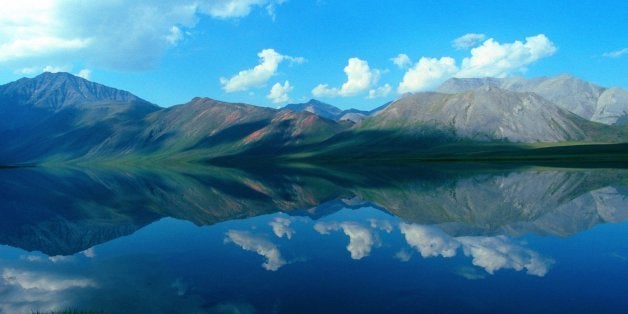
Without visiting it, the 18th-century French natural scientist Georges-Louis Leclerc, Comte de Buffon, propounded the theory that the New World was an inferior creation, its species but degenerate versions of European ones. "There is no North American animal comparable to the elephant: no giraffes, lions, or hippopotami," he wrote. "All animals are smaller... Everything shrinks under a 'niggardly sky and unprolific land.'" Thomas Jefferson, then-ambassador to Paris, was so incensed that he dispatched a revolutionary war hero and 20 soldiers to New Hampshire to bag a large moose and had it shipped to Buffon. So when Charles Wilson Peale uncovered the giant bones of an antediluvian creature he called a "mammoth" (a mastodon, as it turned out), it was a patriotic moment. No traces of such a giant animal had previously been found on Earth. Americans clearly had bigger and better to offer than anything a European naturalist could point to. And for all anyone knew, somewhere out in the territories, in that great wilderness still to be explored, such beasts perhaps still roamed.
In the same spirit, while America had no great buildings or cathedrals, the country had something so much more magnificent than the most awesome of Europe's places of worship. It had nature's architecture, its "cathedrals," in a wilderness unmatched in its wonders.
That was one remarkable American tradition. I represented another. Sometime in the spring or early summer of 1962, I decided to light out for the wilderness. Keep in mind that I was a kid for whom the wilderness was New York City's Central Park and the wilds were the suburbs. So it was an adventurous, if not daft, thing to do. My best friend and I took our bikes, boarded a train, and headed for Bear Mountain a couple of hours away. So many years later, I have no clue how the idea lodged in our heads or why, for the first serious biking trip of our lives, we chose a place quite openly labeled a "mountain." Did we have no concept of "uphill," having grown up in a remarkably flat coastal city? All I remember is that it wasn't long before we found ourselves wrung out at the side of the road, wondering how we would ever get anywhere near our prospective campground. As so often happens, however, we were saved by the kindness of strangers. Someone took pity on us, stopped his truck or van, tossed our bikes into the back, and drove us to our destination.
We were finally in the cathedral of the woods. That night, we pitched our little tent, made a fire, managed to be scared by a bobcat whose glowing eyes we caught in the beam of our flashlight, and finally retired to sleep on ground crisscrossed by roots, only to be attacked by some giant, truly fearsome bug. (Think Mothra!) Yes, it's true: In that cathedral I was praying for deliverance as the sun came up.
And don't even get me started on the beach in California, years later, where I woke up sopping wet from the ocean dew, or the thousands of hopping bugs that advanced on my sleeping bag on Washington's Olympic Peninsula, or that night in a ditch at the side of some road in a scruffy backland when no one would pick up two young hitchhikers. As you'll see today in his piece, "The Wilderness Act Turns 50," TomDispatch regular William deBuys is quite a different kind of American. In fact, at this very moment, he's on a raft joyously heading down the Colorado River through the Grand Canyon.
And here's the thing: As someone who wouldn't be caught dead sleeping one more night in the wild, I genuinely celebrate deBuys and his ilk, who have had such a hand in ensuring that the great natural cathedrals of our American world will be there (we hope) for generations yet to come. His celebration of American nature, based on his own youthful experience lighting out for the territories, ranks among the special pleasures of what I've published at TomDispatch.
